Zeroing In On Your Sandbox(es)
It’s critical for startups to start building momentum upon finding product-market-fit. However, building momentum doesn’t always have to mean expanding into new areas. For many startups, scaling means new products, new geographies, new segments, and new channels. But this can sometimes create too many activities for your startup, which can actually hinder growth and momentum.
The goal should be to reduce complexity so that your startup can do more with fewer resources. This means actually reducing your endpoints - or sandboxes - based on new products, geographies, segments, and channels. Therefore, you’ll be able to focus on your strategic win zones as a way of building momentum. To help you get there, we wanted to share 10 critical levers that will help your startup focus on the areas where it can win as a means of building momentum.
Counting Your Endpoints
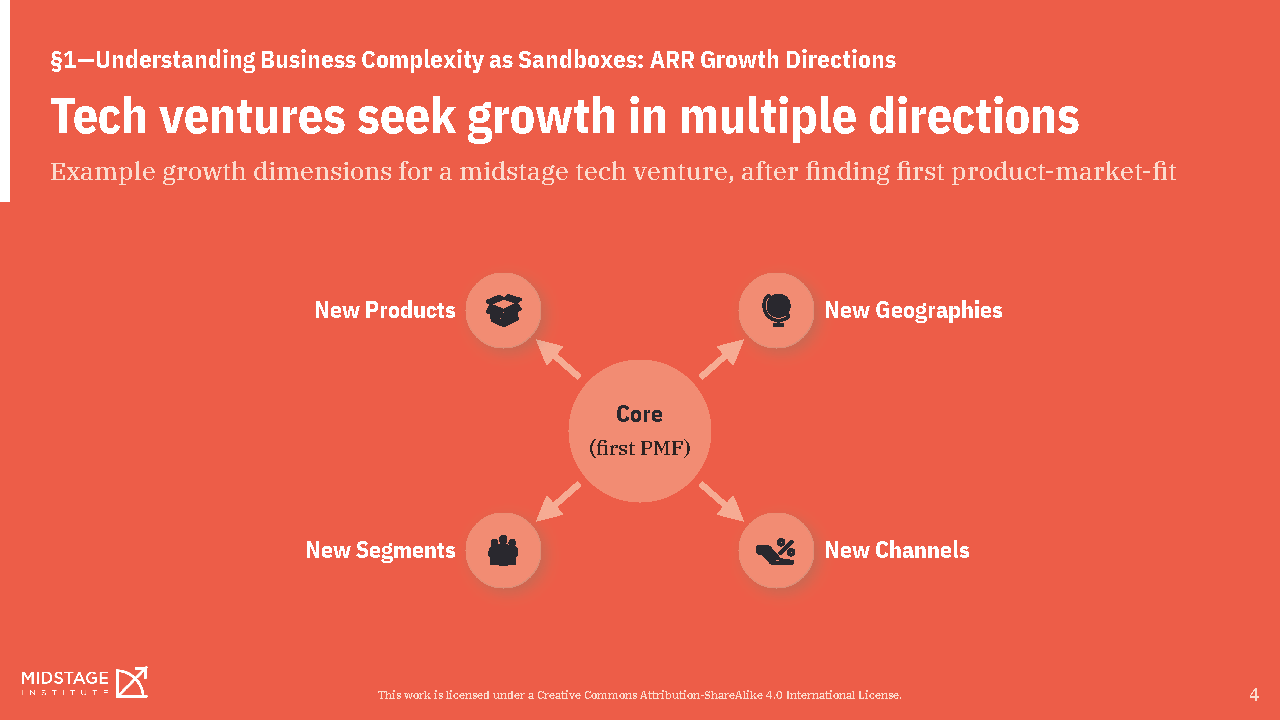
With time, any startup that finds product-market-fit will inevitably look to increase its endpoints. This means adding new products, new geographies, new segments, and new channels beyond the initial product-market-fit. Most startups believe that adding endpoints is what it means to scale. While this may be true, having more endpoints also makes things more complicated. It means more employees, more time demands for managers, and higher operating costs. This is what’s concerning when startups have too many endpoints before they’re ready.
Identify Your Sandboxes
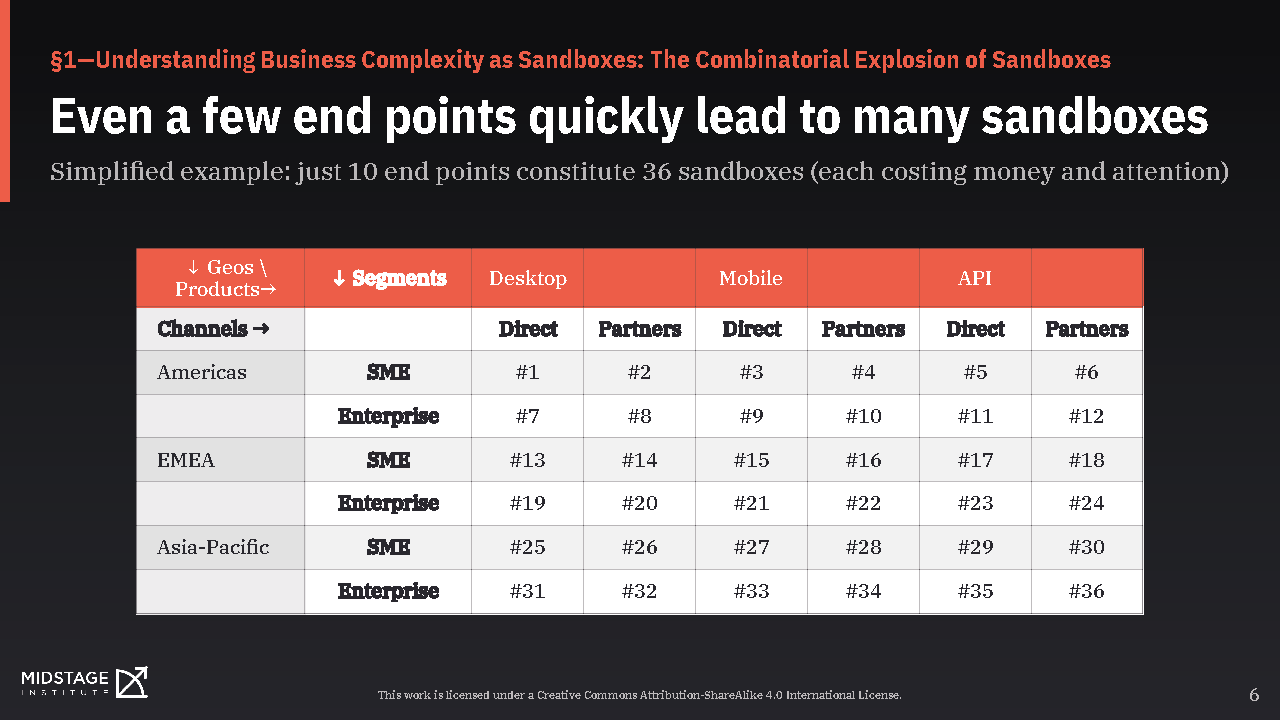
A sandbox is the multiplier of the various dimensions in your startup. In the beginning, everything is usually simple with one product, one geography, one segment, and one channel. This is just one sandbox, and at first, this is the focus of everyone in the startup. But with more endpoints, the number of sandboxes quickly increases. Even if a startup has three products, three geographies, two segments, and two channels, that’s already 36 sandboxes. Each of these sandboxes requires both money and attention to run effectively. Therefore, it’s critical to identify every sandbox within the company as a way to measure the complexity of the business.
Complexity Destroys Agility
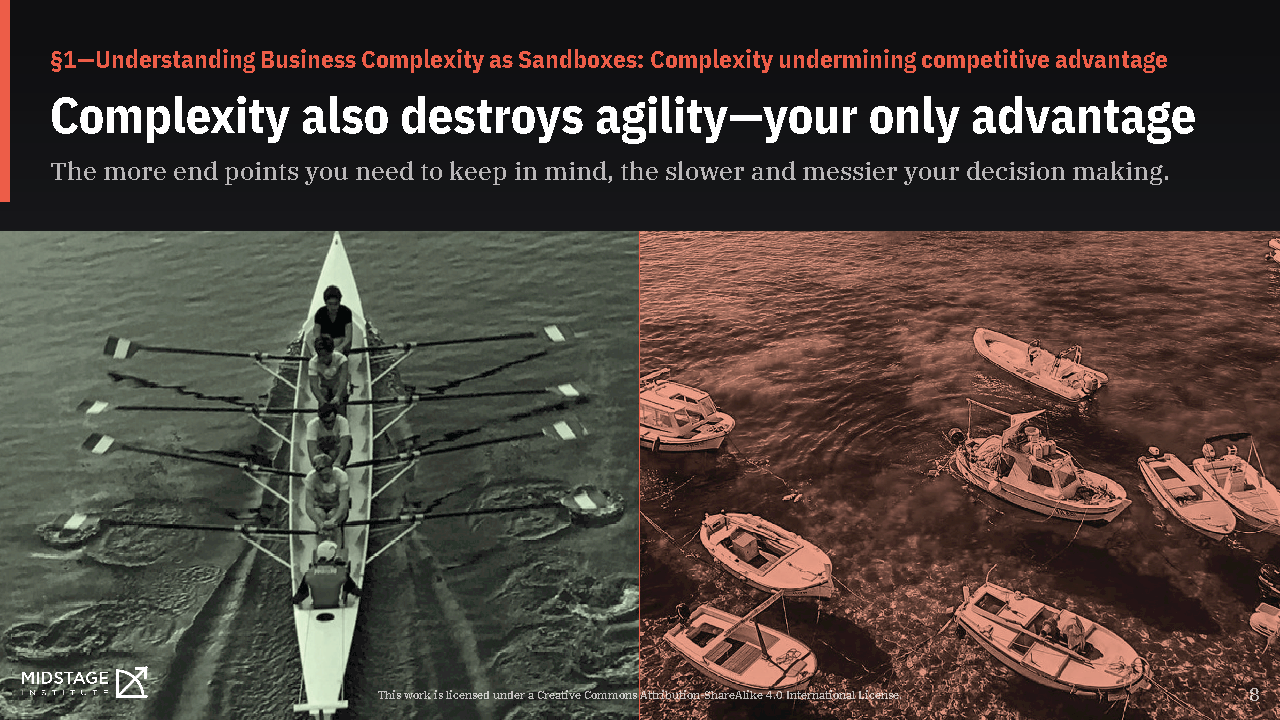
With the added complexity that comes with each individual sandbox, startups start to lose their agility. It’s vital that startups never forget the main competitive advantage they have over the major players in their space is their agility. Therefore, startups must be able to maintain that agility. The issue is that with more endpoints, the decision-making process becomes slower. Likewise, not everyone is pulling in the same direction because employees have different sandboxes to worry about. In other words, creating too many sandboxes can cause startups to lose their agility, and with it, their advantage over competitors.
Cost Growth vs Revenue Growth
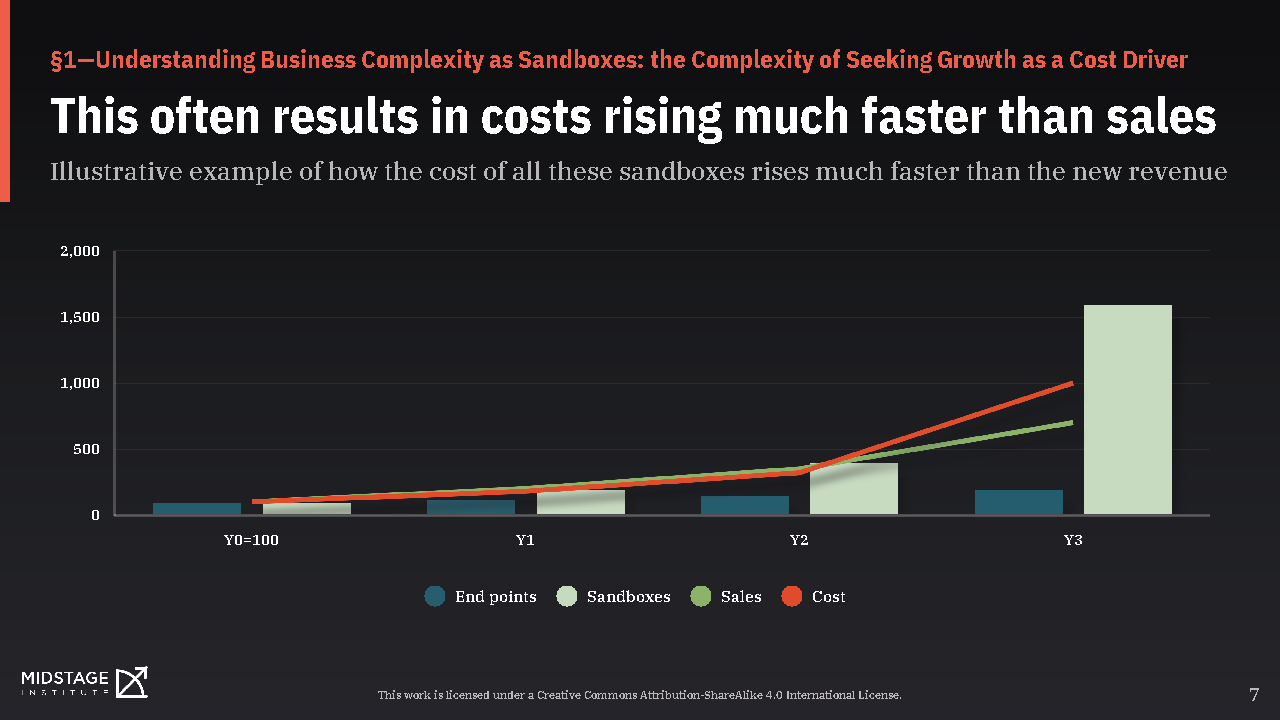
As we’ve alluded to, when startups build more sandboxes, their costs begin to increase. More employees are needed to monitor all of the various sandboxes. There are other costs that come with this type of growth as well. The question is how these costs are growing compared to the revenue and sales being generated by each sandbox. Needless to say, if the added revenue isn’t keeping pace with the growing costs, it’s a problem and an indication that the added complexity of more endpoints and sandboxes isn’t paying off.
Sales vs Profits

If a startup finds that it has too many sandboxes, the next step is to perform triage by eliminating some of them. In deciding what sandboxes can be phased out, it’s best to look at profit margin rather than total sales. Of course, in the best of times, investors just want to see growth, which is why having more sandboxes is a good idea. However, when you need to stretch your runway, every sandbox needs to be profitable. Therefore, it’s best to look at profit margins and not just ARR when deciding where the total number of sandboxes can be reduced.
Risks Moving Away from Core
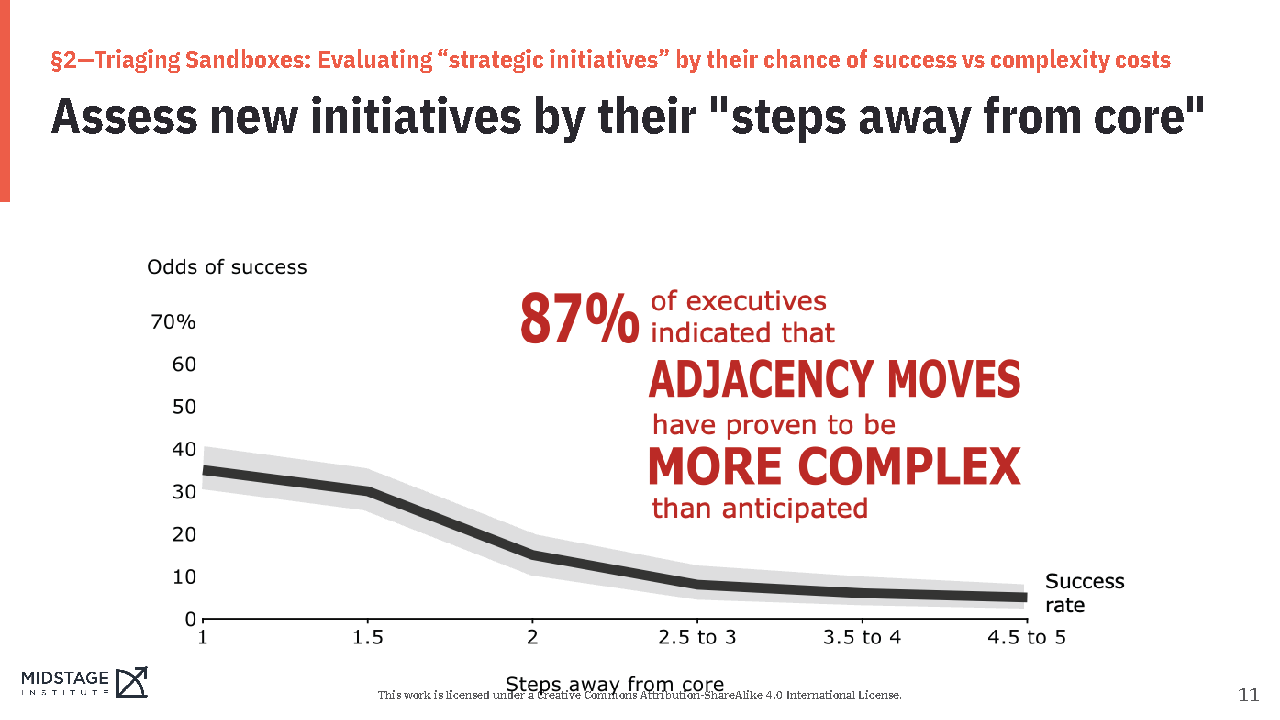
Another factor to consider when doing triage is understanding the risk of moving too far away from your core. In fact, this is also a good tool when analyzing new initiatives. Obviously, the core product, geography, segment, and channels where you initially found product-market-fit is what you do best. But the more steps you move away from your core, the lower your chances of finding success. In other words, avoid changing more than one variable at once. For instance, trying a new product in a new geography at the same time is two steps away from your core. In such an instance, there is too much that’s unknown and too much to learn, making success unlikely. When looking for sandboxes to eliminate, consider those that are multiple steps away from your core.
Chance for Dominance
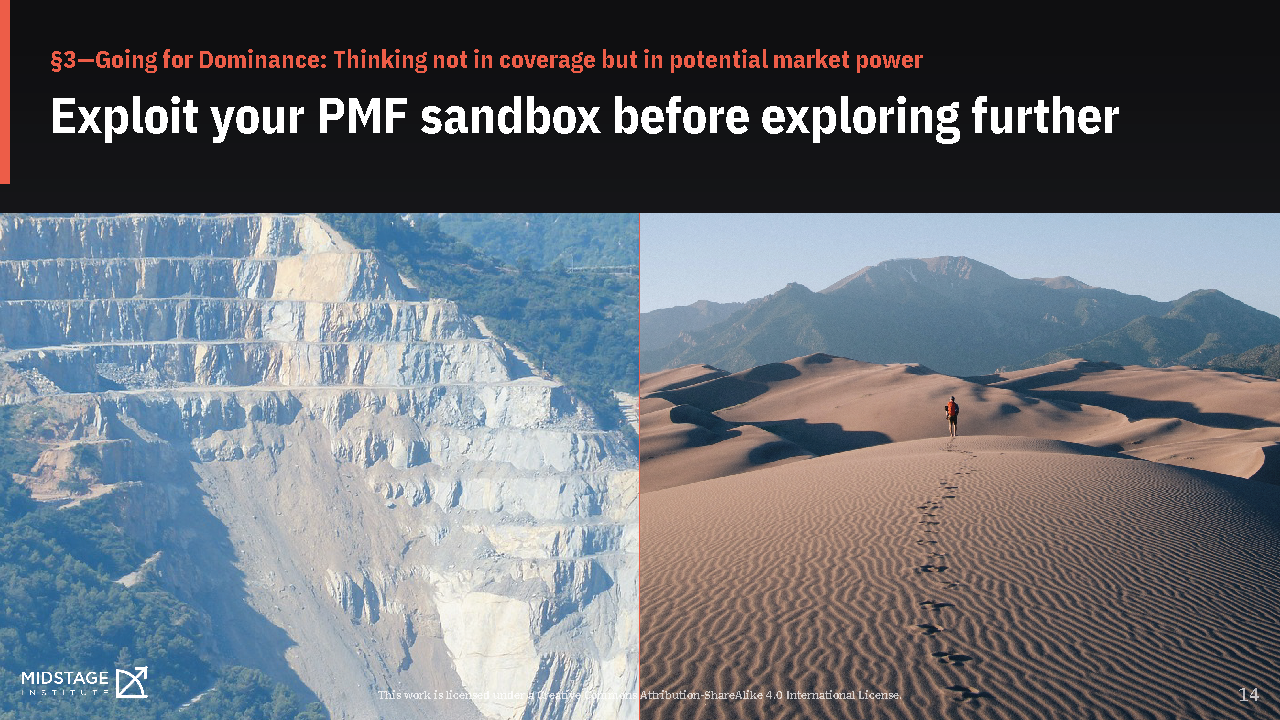
What sandboxes outside of your core should you look to keep? The answer is obviously the ones where you have the best chance to dominate. Where can you control a specific niche? Where do you have pricing power and control? Where is it harder for customers to get rid of you than for you to drop them? These will be the areas where you can turn your product-market-fit into product-market-dominance. You just have to remember to exploit your areas of strength before exploring new areas and risk becoming too complex.
Keep the Best People in the Core
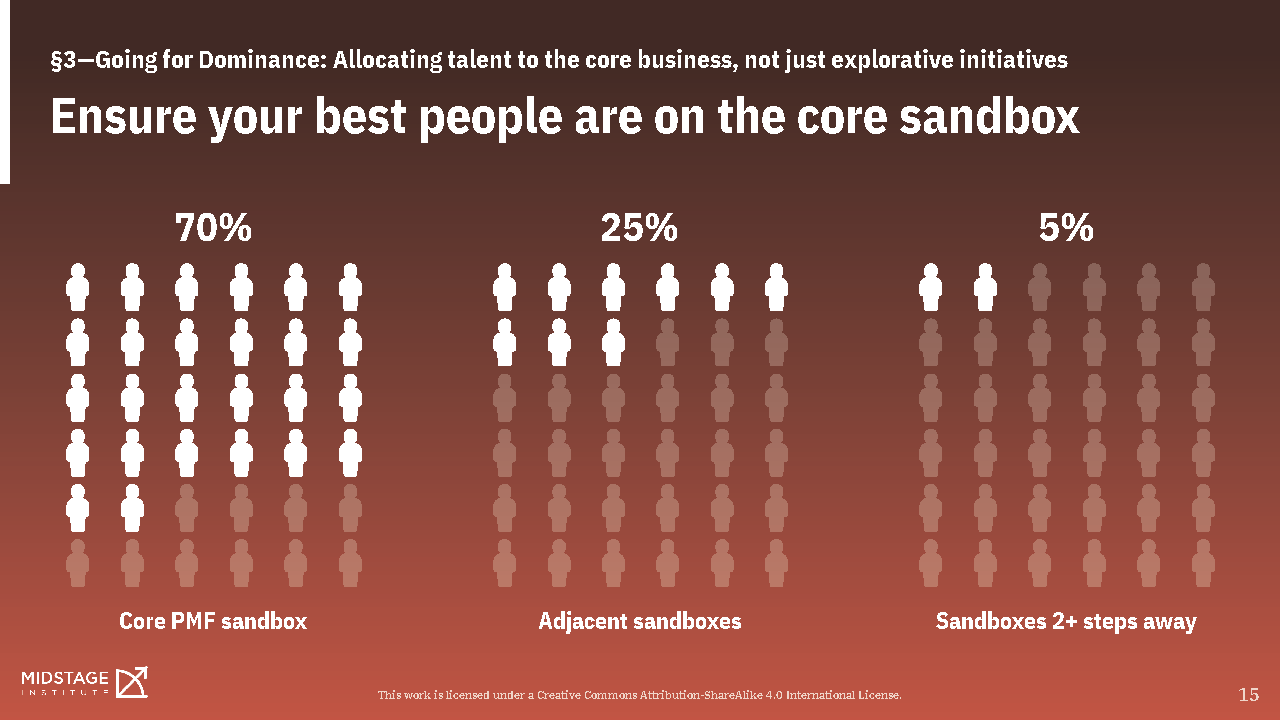
Another issue with a large number of sandboxes that often needs to be corrected is how startups allocate employees. Most startups tend to think that once product-market-fit has been achieved anyone can manage the core, freeing up the best employees to explore new avenues and create new sandboxes. But remember what we just said about exploiting before exploring. It’s better to be dominant in one sandbox by keeping your best people there before trying to build more sandboxes. This is why we recommend keeping around 70% of your best employees in the core sandbox while the rest explore adjacent sandboxes.
Measure Market Share
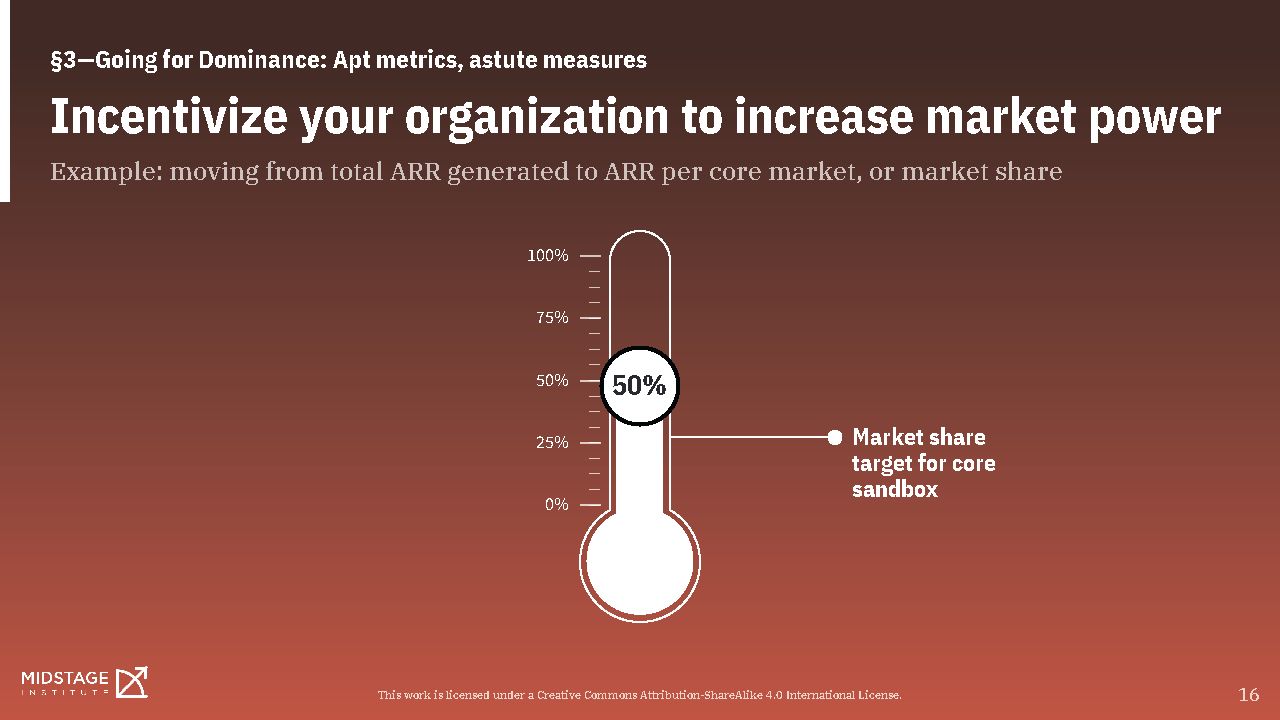
During the journey from product-market-fit to product-market-dominance, market share is one of the most important metrics. Most startups get caught up with ARR. But merely counting the total number of deals closed isn’t nearly as important as market share or in-market ARR. This is what will tell you if you are dominating a particular sandbox or not.
Know How to Retreat
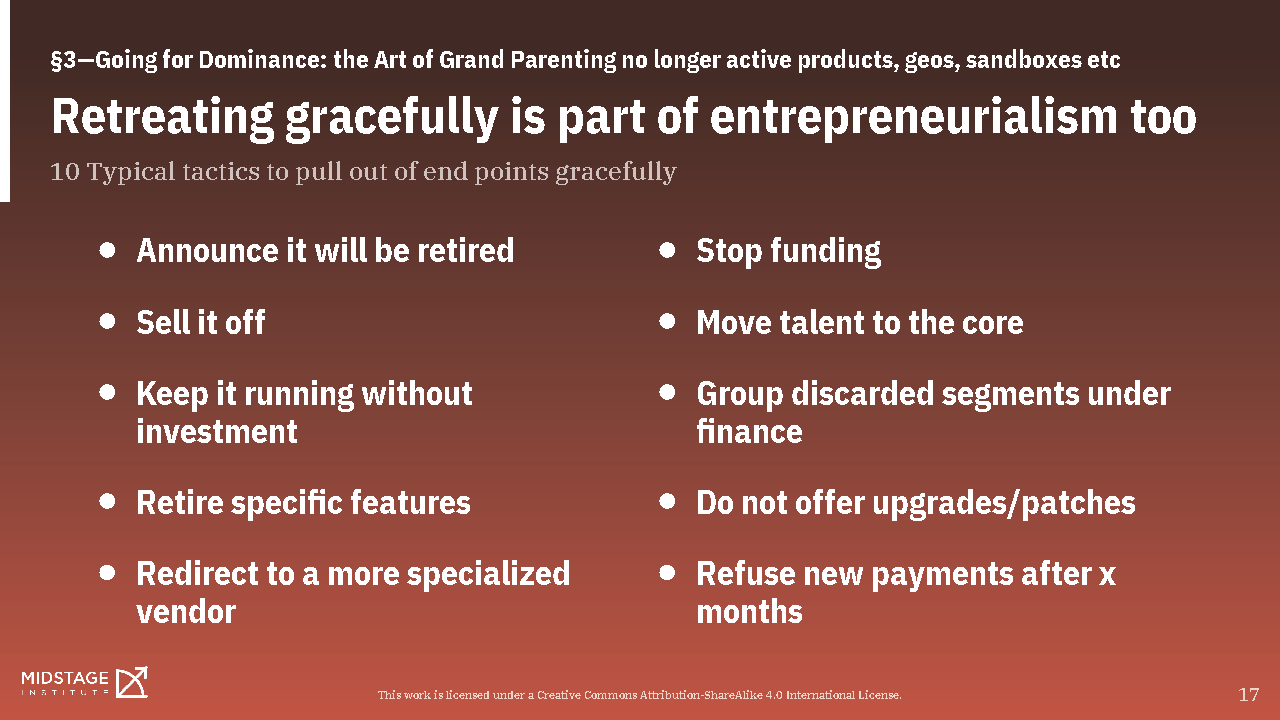
Last but not least, if your startup is failing in a sandbox, retreating from that sandbox gracefully is an important step. When you make the decision not to continue in that area, there are several options. It can be as simple as announcing it will be retired or trying to sell it off. You can stop funding it or merely keep it running without any further investment. In some cases, it’s possible to retire specific features, stop offering upgrades, or redirect to a more specialized vendor. If nothing else, it’s a good idea to move the most talented employees away from that sandbox and back to the core. You don’t want to make the mistake of leaving talented employees in a sandbox that isn’t being supported.
Conclusion
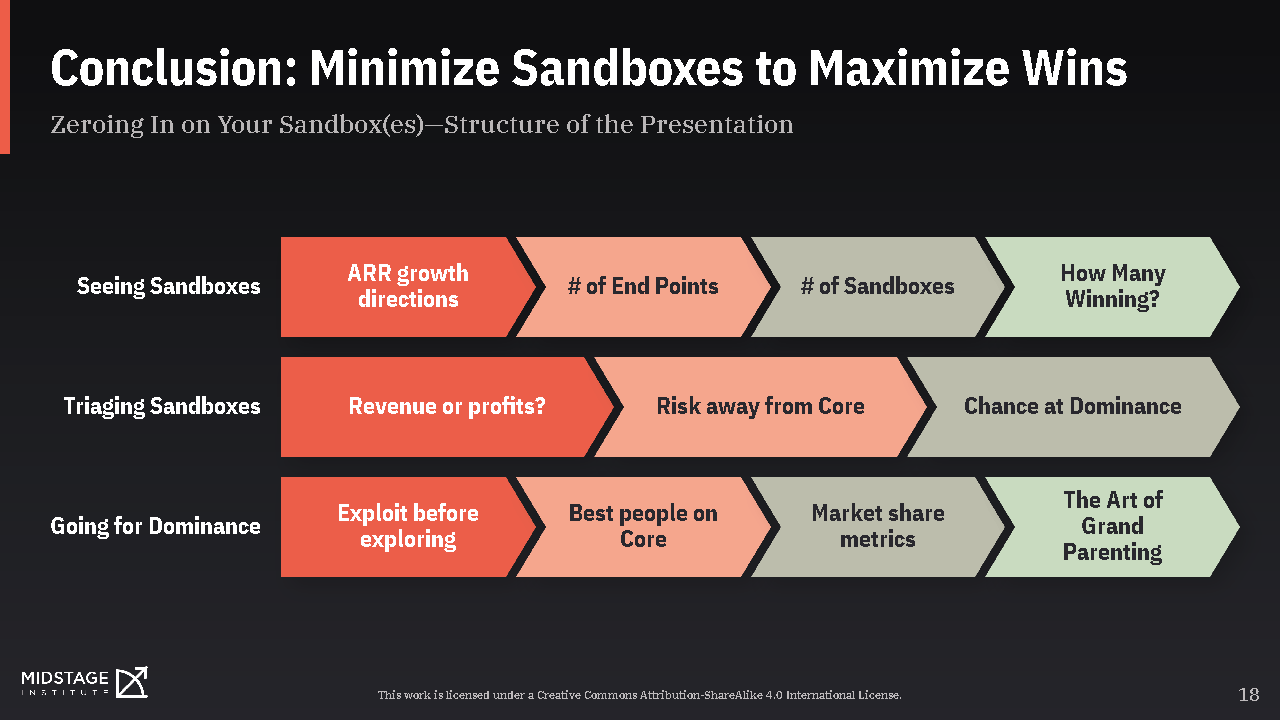
To summarize, the number of sandboxes that your startup operates correlates to the complexity of your business. By identifying each sandbox and knowing how many you have, it’s possible to gauge how you’re undermining your biggest competitive advantage, which is your agility. When the cost of growth is higher than revenue growth or sandboxes simply aren’t profitable, it’s best to reduce the number of sandboxes as much as possible. This allows your startup to zero in on the areas where it can achieve wins and start building momentum.
If you wish to speak about your company’s sandboxes or other ways to boost momentum after reaching product-market-fit, reach out to the MidStage Institute.
Roland Siebelink talks all things tech startup and bring you interviews with tech cofounders across the world.